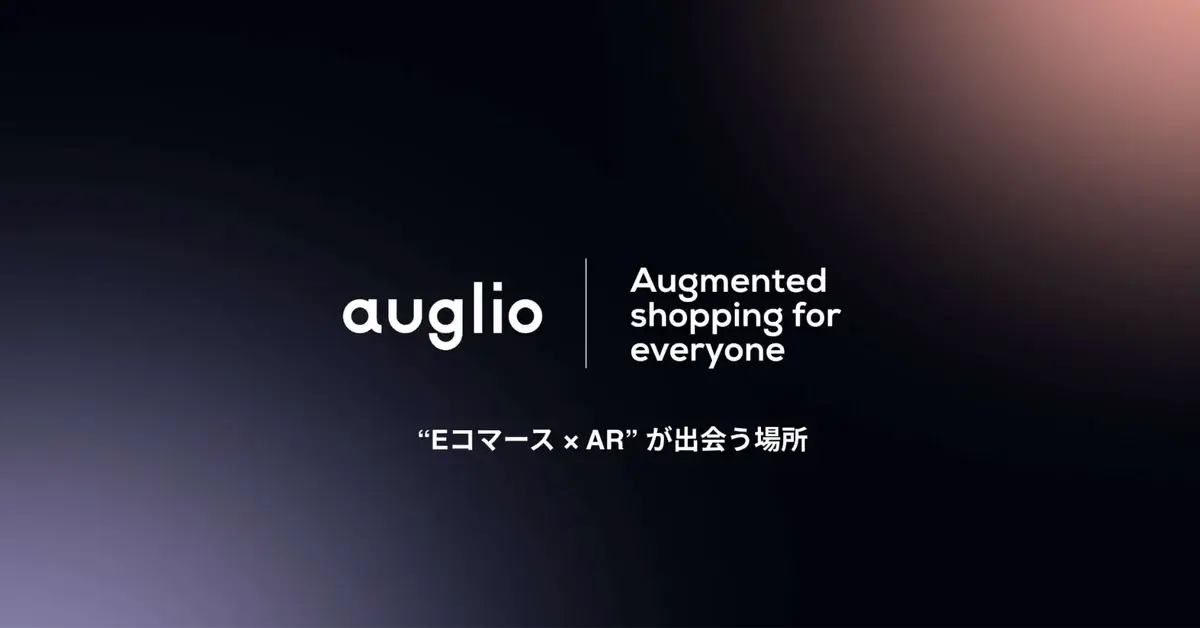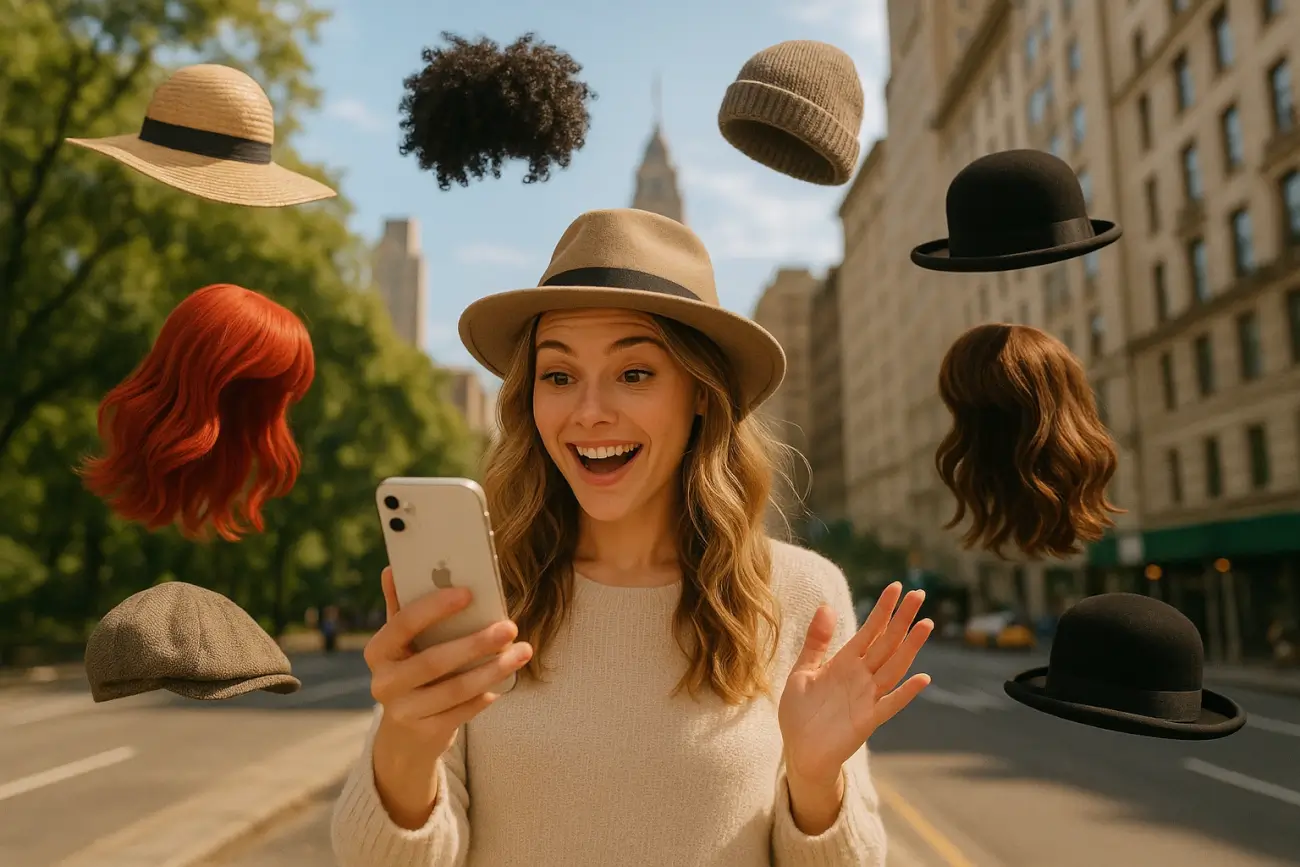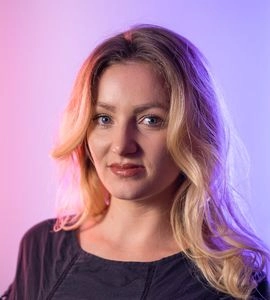Face shape detection has quietly moved from “fun demo” to one of the most practical ways to reduce doubt in online shopping. When paired with virtual try-on, a face shape detector can guide shoppers toward frames, hair, or makeup that flatter their natural geometry. The result is a smoother path to purchase and fewer “this doesn’t suit me” returns.
This guide breaks down what a modern face shape analyser can do for your store—across eyewear, beauty, wigs, and headwear—how to design the experience so real customers actually use it, and how to prove its value in your numbers.

What “face shape detection” really does (and doesn’t)
At its core, face shape detection estimates a shopper’s overall facial outline and key landmarks—cheekbones, jawline, chin, forehead—and classifies the geometry into an approachable category set (oval, round, square, heart, diamond, oblong, and combinations). A good face shape detector doesn’t stop at a label; it translates that shape into practical suggestions inside your virtual try-on so shoppers see why a recommended style works for them.
It’s not a promise of perfection. Faces are diverse, hairlines change, camera angles vary, and lighting can be chaotic. The aim isn’t to be a stylist replacement; it’s to give shoppers a confident starting point—then let them explore quickly without getting lost.
Eyewear: From hesitation to “add to cart”
Eyewear is where face shape detection shines. Shoppers often browse dozens of frames but hesitate, unsure if a style complements their jawline or balances their forehead and chin. When your VTO overlay understands face geometry, it can surface frames that typically work best for that shape: softening a square jaw with rounded edges, balancing a round face with angular lines, or pairing an oval face with bolder silhouettes.
The fastest wins come from three patterns. First, reorder category or search results so frames with the highest predicted suitability appear first. That simple ranking shift removes decision friction and increases try-on depth. Second, add a small, friendly explanation next to each recommendation—“Why this works: wider upper rim that balances your jawline”—so the suggestion feels transparent, not pushy. Third, keep a graceful exit: one tap lets the shopper explore outside the recommended set at any time, because style is personal.
Where it gets even more powerful is when face shape detection meets fit signals. If you also measure pupillary distance (PD) and frame width, you can turn “looks good” into “looks good and likely fits.” Some merchants express this as a FaceFit Confidence Score—a simple, color-coded indicator that blends face shape match, frame width range, and PD alignment. The score isn’t a guarantee; it’s a nudge that moves a shopper from “maybe” to “this could be the one.”
Beauty: More than a mirror—smart placement and style cues
In cosmetics, face shape detection helps with placement and style choices rather than strict color. Contouring, blush, and highlighter placements change with bone structure; so do eyebrow shapes that complement a face. Inside your virtual try-on, the system can propose gentle contour mapping for round faces (to add definition), lift blush placement for heart or diamond shapes (to balance a narrower chin), or suggest brow arches that suit square or oval faces.
This is not about rigid rules. People should still experiment. But many shoppers appreciate a starting map with a quick “why.” For example, a subtle overlay can show the recommended blush zone for their shape and then fade out, letting them preview the finished look without visible guides. If you sell kits or bundles, face shape–aware “starter sets” (e.g., contour stick + blush + highlighter with pre-tuned placements) make a compelling add-on.
Wigs and hair: Instant “does this suit me?” clarity
Choosing a wig or new hairstyle online is emotionally loaded. Face shape detection can reduce buyer’s remorse by steering shoppers toward cuts and lengths that harmonize with their proportions. Heart-shaped faces may benefit from volume around the jawline; round faces often shine with vertical lines and layered ends; square faces can soften with gentle waves and side parts.
When combined with head measurement or cap sizing tools, you can take this further. Recommend a cap size likely to fit, preview hairline placement accurately, and even simulate density. The result is not just “this style suits you” but “this style suits you and this cap is likely your size,” which cuts the most common reasons for returns in the category.
Headwear and helmets: From fashion to sizing
Hats, caps, and especially helmets benefit from harmonizing two ideas: face shape for style, and head size for safety/comfort. A shopper could preview beanies, caps, or wide-brim styles shaped to complement their face while a measurement module recommends the right circumference or helmet size. If your product detail pages normally drown people in sizing charts, this combination streamlines the experience into two human sentences: “This style balances your face shape. We suggest size M based on your head measurement.”
Merchandising with “Top 3 for your face”
Merchants often ask where to put face shape insights. The answer is everywhere they reduce friction, not just in one modal window. On collection pages, add a “Top 3 for your face” ribbon so shoppers can start strong without clicking into every PDP. On product cards, show a tiny “Best for oval / also great for square” hint. On PDP, keep the VTO button visible above the fold and clarify why a frame is recommended. In email and retargeting, mirror the same logic: show three frames or styles that match the shopper’s saved face profile and invite them back to continue trying.
This consistent thread—from discovery to detail page to remarketing—keeps the shopper in a single, confidence-building story rather than bouncing them between disconnected tools.
UX: Make it transparent, fast, and optional
The words you use matter. “Face shape detected: oval (why?)” is far friendlier than “classification: 0.71 confidence.” A quick explainer—“We analyze your facial outline to suggest styles that typically flatter similar shapes”—builds trust without feeling clinical. Offer a one-tap “why this style works” explanation and let shoppers dismiss it permanently if they prefer.
Speed beats cleverness. People will not sit through a long calibration. Start the camera, detect shape in under a second, and surface a recommendation—then get out of the way. If the system is unsure, say so and offer two neighboring shapes the shopper can choose between. If the light is poor or the angle is extreme, ask for a quick adjustment with one short sentence. The tone should be friendly, not fussy.
Privacy is part of UX. Make camera permissions clear and minimal, process video on-device when possible, and allow a photo-upload or “demo without camera” fallback for privacy-sensitive shoppers.
Accessibility and inclusivity by default
An inclusive face shape analyser performs consistently across varied skin tones, ages, and features. Train and test on diverse datasets, and sanity-check on the devices your customers actually use. Keep controls reachable and labeled, ensure the tool is operable with keyboard/switch controls, and provide alt text and status messages a screen reader can pick up. Accessibility isn’t just compliance—it reduces friction for everyone.
This extends to language. Avoid prescriptive copy like “people with round faces should never wear X.” Instead, suggest: “Angular lines often balance round faces—try these first.” Give people permission to explore beyond recommendations and celebrate outliers; trends move, personal style evolves, and your experience should support that.
How the tech fits together (without the math)
Under the hood, most systems follow a simple flow. The camera activates and stabilizes exposure; the face shape detector estimates landmarks and outlines; a lightweight classifier maps this geometry into shape families with a confidence score; your storefront applies merchandising logic to reorder products and annotate the virtual try-on with helpful hints. If you also run PD or head measurement, the system merges those signals into a “fit” estimate. The rendering layer does the rest, placing frames or hair accurately and showing makeup in the right places.
The most important engineering choice isn’t the model; it’s how gracefully you fail. When lighting is mixed or the face is partially occluded, don’t force a result. Ask for a small adjustment, or present two close options. Be honest and predictable, and shoppers will trust you.
What to measure (and how to prove ROI)
Treat face shape detection like a revenue feature with clear goals. Start with conversion rate uplift among sessions that engage the tool versus those that don’t, controlled by product and traffic source. Watch the average number of try-ons per session, because recommendations that feel “right” make people explore more. Track assortment narrowing—how quickly shoppers reach a short list—and how often a “Top 3” recommendation ends in “add to cart.”
Returns are the second lever. Monitor return rate deltas for orders that included a face-shape-recommended item versus those that didn’t, especially for styles prone to “doesn’t suit me” returns. In eyewear, add a PD/width fit flag to your analysis; in wigs and headwear, correlate face-shape-guided style picks with cap size success. If you sell bundles, check whether face shape guidance raises attachment rates on complementary products (like lens upgrades or styling kits).
Finally, keep an eye on lifetime value. A shopper who feels “seen” and repeatedly gets suggestions that suit them is easier to retain. Look at time-to-second purchase for face shape users versus a matched control.
Pricing and packaging ideas that actually sell
One mistake is to bury face shape detection as a quiet setting. Put it where your sales team can use it. Consider a tier that combines Face Shape Detection + PD measurement + head measurement. Buyers like simple outcomes; a branded score is easy to explain in a deck and even easier to feature on a PDP. It also supports premium positioning for merchants who want a more guided, “concierge” try-on.
If you operate on Shopify or a similar platform, package face shape detection as an add-on module with quick-start defaults. Offer a 30-minute “merchandising tune-up” where you align rules to the merchant’s catalog—e.g., spotlighting new collections inside the “Top 3 for your face” rail.
Content and messaging: Education drives adoption
Short videos or looping demos that show “before and after” feeds adoption. For eyewear, demonstrate how the recommendation changes when the shopper toggles between shapes; for beauty, show how blush placement subtly adapts. On social, invite customers to post side-by-side try-ons for two shapes with a playful “Which team are you?” caption. This kind of content normalizes the tool and reduces any “is this judging my face?” anxiety.
On-site microcopy should feel like a stylist whispering, not a machine declaring. Explain why specific details matter—bridge shape, rim height, temple angle, hair volume around the jaw—so shoppers feel they’re learning a style language they can use beyond your store.
Data, privacy, and trust
Because the experience uses a camera, be explicit about what you collect and for how long. Offer on-device processing where feasible, and store only what’s necessary to remember preferences or speed up future sessions. If you generate a persistent profile, let shoppers edit or delete it without a support ticket. The clearer you are, the more people will opt in—and the better your recommendations get.
A simple launch plan that works
You don’t need a giant project to get value. Start with a meaningful subset of the catalog—best-sellers plus items with higher return rates. Enable face shape detection and connect it to your virtual try-on. On collection pages, add the “Top 3 for your face” rail; on PDPs, place the “Try on” CTA above the fold and a short “Why this frame works” note right below the gallery. Set up clean analytics to compare sessions with and without face shape engagement. After two weeks, review conversion, return deltas, and try-on depth. Tweak the merchandising rules and scale it to the rest of the catalog.
As you expand into wigs, headwear, or cosmetics, bring the same playbook: transparent suggestions, soft explanations, fast opt-out, and a privacy-first approach to camera use.
Face shape detection only matters if it makes buying easier. When it’s woven into virtual try-on, it turns a sea of options into a short list that feels personal. Shoppers get a clear, friendly reason a product suits them; you get higher conversion, fewer returns, and a merchandising layer that gets smarter over time. The technology is ready. The rest is good UX and a clear story from your storefront to your CRM.
If you want help mapping this to your specific catalog, we can review your current try-on flow, recommend the best placements for face shape detection, and set up measurement so your team can see the impact in black and white.
Tags: Virtual Try On Face Shape






